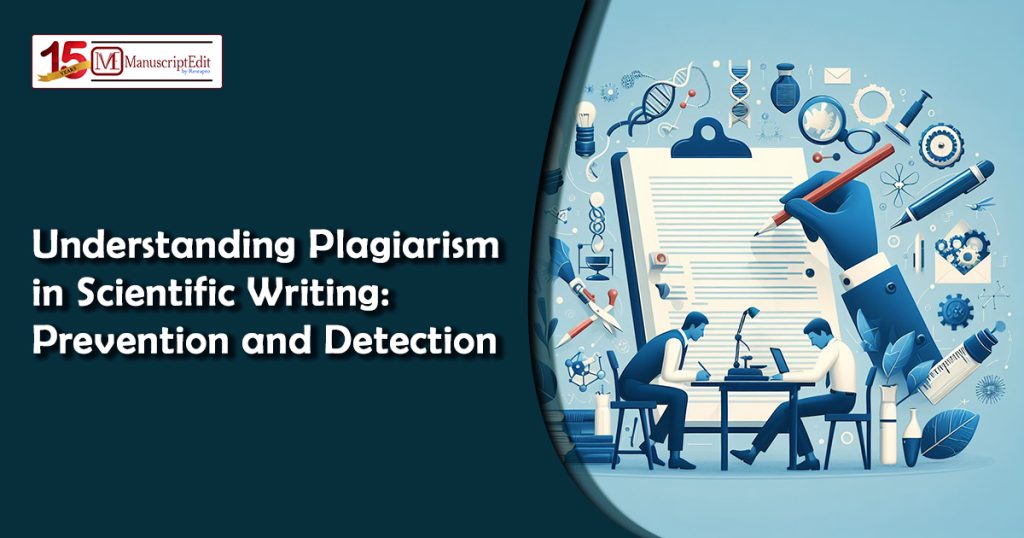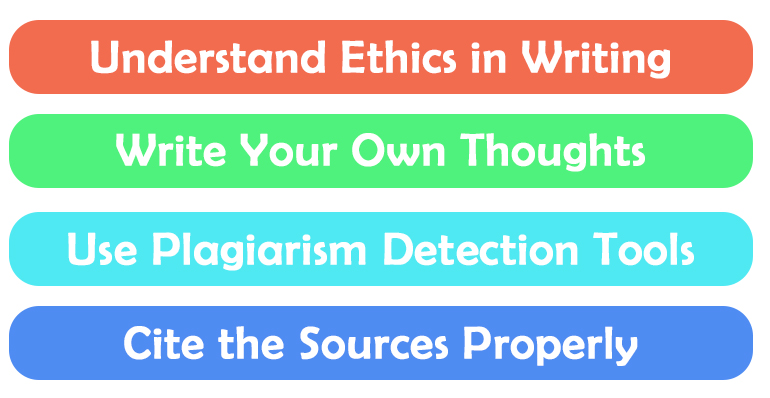 Scientific writing embodies the ethical duty to preserve the values of intellectual honesty and originality and to be a vehicle for disseminating ground-breaking findings and creative ideas. However, the issue of plagiarism looms large, seriously threatening the integrity and dependability of scientific endeavors as the rush to knowledge and the need to publish increase.
Scientific writing embodies the ethical duty to preserve the values of intellectual honesty and originality and to be a vehicle for disseminating ground-breaking findings and creative ideas. However, the issue of plagiarism looms large, seriously threatening the integrity and dependability of scientific endeavors as the rush to knowledge and the need to publish increase.
Understanding the types of plagiarism, the ethical issues surrounding authorship and attribution, and the developing technological tools intended to expose instances of academic misconduct become critical as we traverse the complex terrain of academic publishing.

Why Plagiarism is a Serious Concern in Scientific Writing?
It is strictly forbidden to plagiarise in scientific writing. It spoils research integrity and undermines scholarly trust, defeating the entire endeavor’s purpose. Researchers’ work suffers, and knowledge advances more slowly when they fail to give credit to the people who first came up with the ideas or facts.
Academic penalties, legal ramifications, and reputational harm to individuals and organizations are further outcomes of plagiarism. The scientific community’s integrity and knowledge progress depends on maintaining the highest ethical standards in scientific writing.
What Types of Plagiarism are involved in Scientific Writing?
In scientific writing, plagiarism is when someone uses someone else’s concepts, works, or words without giving due credit. In academics, it is a grave ethical transgression. In scientific writing, plagiarism can take the following forms:
- Direct Plagiarism
Submitting an essay or a paragraph copied verbatim from a website without acknowledgment. Copying and pasting paragraphs from a book or article without proper citation.
- Patchwork Plagiarism
Taking sentences or phrases from various sources, rearranging them, and presenting the resulting work as one’s own with citations, but without a clear indication of the borrowed language.
- Inadequate Citations
Using someone else’s ideas and citing them, however, the reference is inaccurate or lacking information. Misquoting a source can give the impression that the material comes from a different or nonexistent reference.
- Uncited Visual Content
Using any visual material—such as charts, graphs, or photos—from a source without giving due credit or citation. Appropriating diagrams or infographics made by others without providing acknowledgment.
- Faulty Paraphrasing
Rephrasing a paragraph without giving it due credit by adding or subtracting words while keeping the original concepts and organization. Rewording passages from a source to appear like original work without citing or utilizing quotation marks.
How to Prevent Plagiarism in Scientific Writing?
Academic integrity in scientific writing requires that plagiarism be avoided. There are various tactics that researchers might use to prevent accidental or purposeful plagiarism.
- Careful planning and attention to detail are necessary for producing quality academic writing. Give yourself enough time to write and rewrite because haste makes plagiarism more likely. Academic writing requires careful preparation, including reading widely and following tight citation rules.
- Journals often check for plagiarism; thus, rejecting an article for plagiarism is a good use of effort. The simplest method of avoiding plagiarism is to quote directly; this requires correct citation and quotation marks. Ensure all formatting and punctuation in the original text are replicated accurately. To prevent mistakes, ensure all sources mentioned have accurate bibliographic information.
- When done well, paraphrasing requires you to communicate concepts in your own words without revealing the source text. Read a lot to increase your vocabulary, especially from well-written books.
- If you need help with how well you write or paraphrase, use the available services to conduct extensive plagiarism checks. Choose editing services that offer continuous plagiarism checks to protect your paper from unintentional plagiarism.
How to Detect Plagiarism in Scientific Writing?
Academic integrity requires researchers to be thoroughly aware of plagiarism and how to spot it. Ability in bibliographic searches, academic English ability, and graphic design abilities can reduce the likelihood of plagiarism. It is essential to combine human detection with anti-plagiarism techniques.
- Even though the present anti-plagiarism methods have flaws, ignoring editorial checks puts academic credibility in danger and encourages predatory behavior.
- Manuscript quality is improved using resources like Grammarly, PlagScan, and Google Scholar.
- Tools for detecting plagiarism that are freely available are essential, particularly in situations when resources are limited.
- Similarity scores should not be the only factor considered when making editorial judgments, even though iThenticate checks assist in reducing unethical publications.
- A more difficult task is image plagiarism detection, which calls for semantic mapping and image processing. Despite its widespread use, Google Images has drawbacks, making developing sophisticated systems for identifying plagiarism in graphics necessary. Journal editors must advise writers on the appropriate usage of images to preserve the integrity of publications.
Conclusion
Boost the credibility of your research and increase the likelihood that it will be published! Seek the advice of Writing & Editing Services to start down the path to flawless research. Let us help you achieve academic excellence by allowing you to understand the nuances of plagiarism and by providing you with helpful prevention and detection strategies. Improve your scientific writing by speaking with Reseapro right now.

